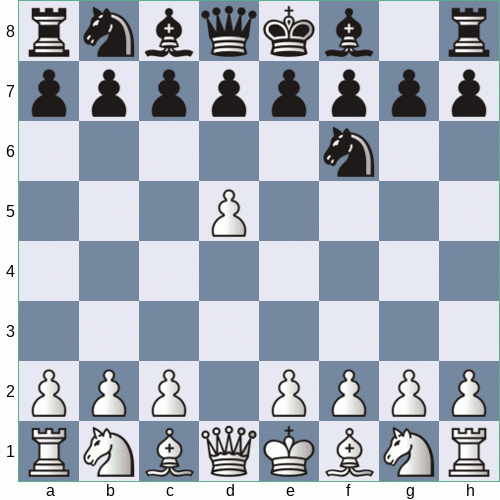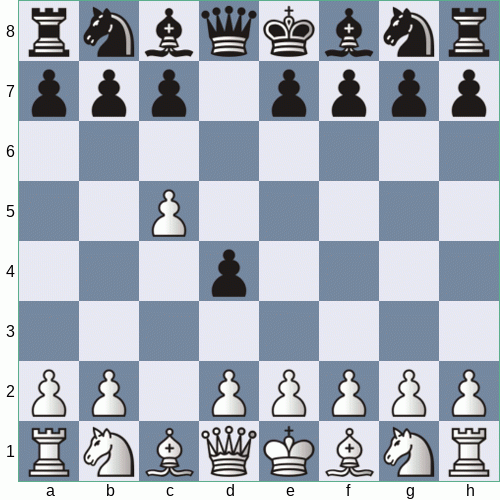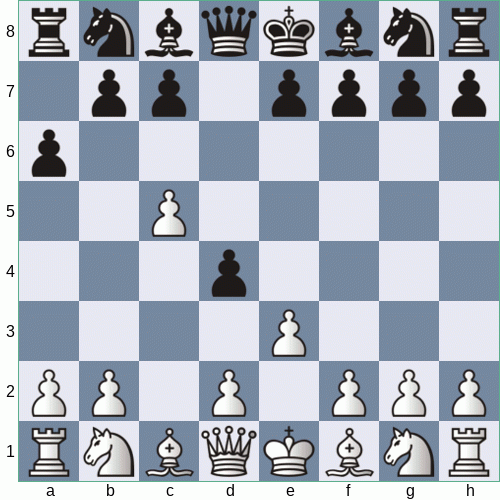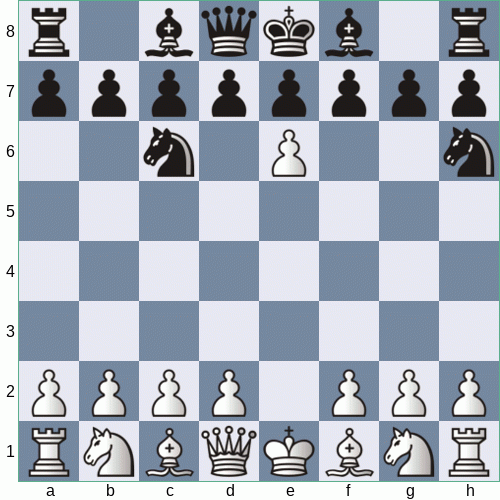Learning Center: En Passant Capture
En Passant Pawn Capture
 An example en passant capture
An example en passant captureNo move in chess causes more confusion (and accusations of cheating) than the en passant capture.
There are several reasons for this. First, it violates the intuitive and otherwise universal rule that a piece is captured by "landing" on it. Second, it occurs infrequently enough that one can play or watch many games without ever encountering it. And finally, it is often very poorly explained to new players or just ignored entirely because of its oddity.
But have no fear, the rule is actually quite simple. With a proper understanding and a little practice, it will become as natural and obvious as any other move in chess.
It's worth noting that en passant was added for a very specific purpose and is directly related to the previous rule change which allowed pawns to move two squares forward on their initial move. Without the two-square pawn move, there would be no reason for this special rule.
There are lots of different wordings of the rule, but here is what is hopefully the simplest formulation:
When a pawn moves forward two squares, if an opposing pawn is positioned so that it attacks the empty square the first pawn passed through, the opposing pawn may capture the first pawn by moving onto that square.
OK, not so simple after all. But really it's only the wording that is tricky, the concept is not. Think of it this way: whenever your opponent moves a pawn two squares, imagine he only moved it one square instead. In that position, do you have a pawn which could capture his? If so, then you get to make the capture just like you normally would: you move your pawn diagonally one square and take his pawn off the board. You literally just pretend he moved his pawn one square instead of two, and play accordingly. Everything ends up the same way, it just looks funny because you are "capturing" an empty square.
Have a look at the diagram above. Black moves his pawn from c7 to c5. White imagines the position where Black had played c7-c6 instead, moving his pawn one square only. Since White has a pawn on d5, which could capture a black pawn on c6, he makes the move d5xc6 and removes the black pawn from the board. Since the capture occurs on the square the black pawn has passed through, we call this "en passant" which is French for "in passing".
And just to clarify, at the risk of sounding repetitive, an en passant is only possible when an opposing pawn has moved two squares at once. If a player moves a pawn forward one square on one turn and then another square on another turn, no en passant possibility has been triggered regardless of where any other pawns stand.
There are two very important restrictions to capturing en passant:
- It involves pawns only, a piece cannot make an en passant capture. So if your opponent moves his pawn from e7 to e5 and you have a bishop which attacks e6, you don't get to take his pawn with your bishop. It's not completely consistent, it's just the way the rule is.
- It must be done on the very next move, right after a pawn has moved two squares. This is the only move in chess that has such a built-in time limit, so that too may seem strange. But otherwise we would have to keep track of how every pawn had arrived at its current position. This way we only have to know the very last move, and whether it was a two-square pawn move or not.
Like all captures, an en passant capture is optional, and a player is never forced to carry it out. Unless of course it is the only legal move available, which can happen sometimes in endgames.
Now test your understanding on the following positions. Try to work out the answer yourself before clicking the "Reveal" button to verify.
 White played e2-e4; Can Black capture?
White played e2-e4; Can Black capture? White played e3-e4; Can Black capture?
White played e3-e4; Can Black capture? Black played f7-f5; Can White capture?
Black played f7-f5; Can White capture?



